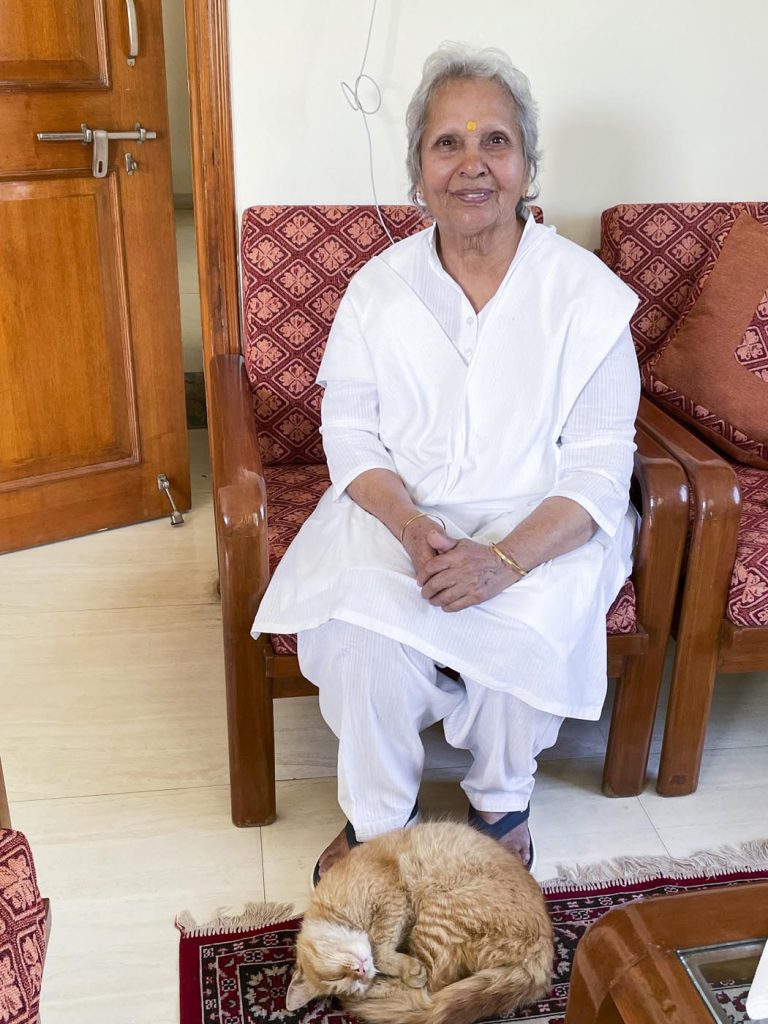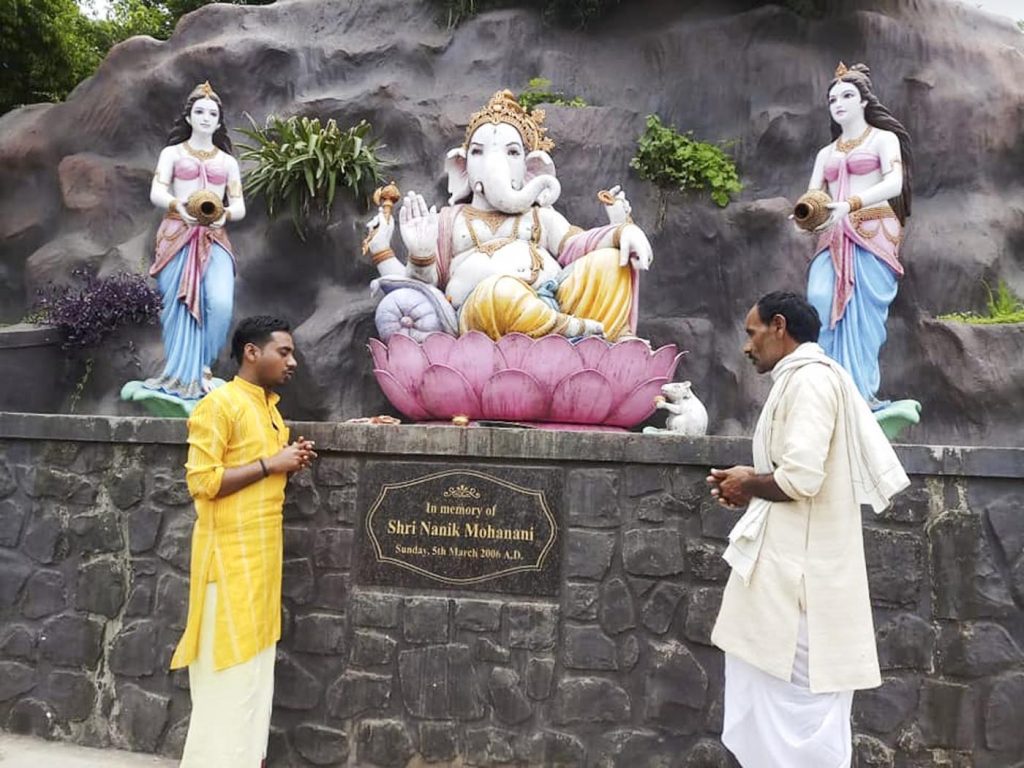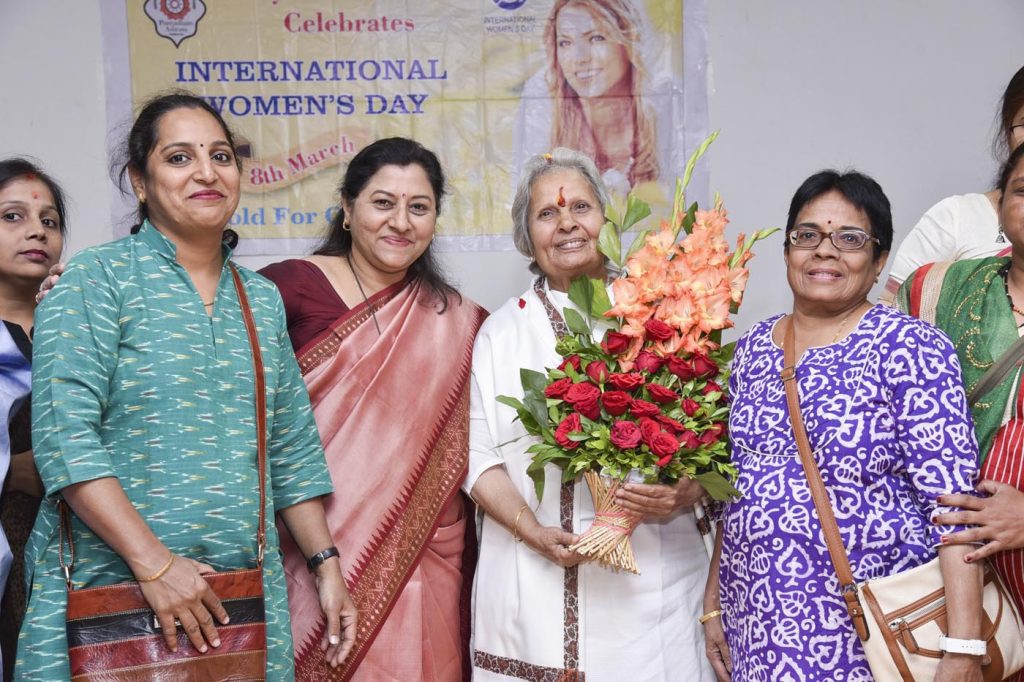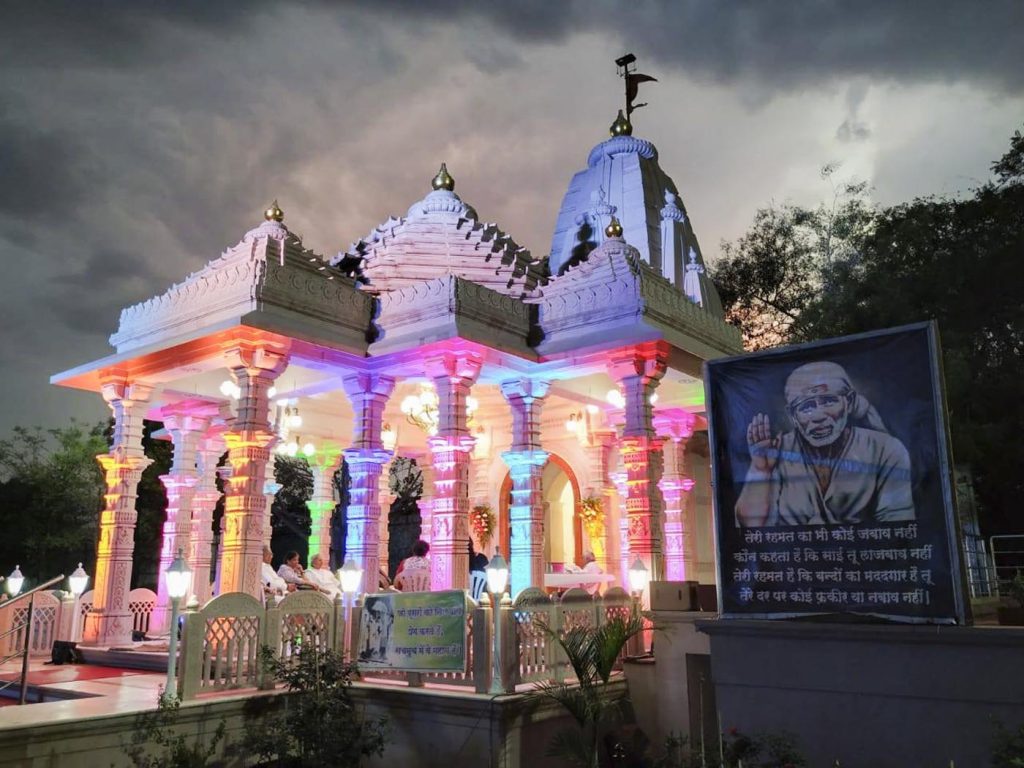The Punya Dham Ashram provides retirement homes for cows and aging humans as well as mass weddings for the young
By Lavina Melwani, New York
When a child is born, there is so much joy and celebration—as if royalty has arrived at the home, with music, dance and sweets. Yet what happens when people get old? There is no celebration of aging bodies, grey hair, fading eyesight and memory loss. There is almost a sense that the elderly are dispensable, just waiting for death. These seniors are often abandoned by their own families and made to feel unwanted and unnecessary.
Meet a woman who is a champion for the forgotten and the disposable. Krishna Kashyap has not only founded a retirement home for elderly people but also a retirement home for old, abandoned cows who can no longer give milk and whom no one wants. Kashyap, lovingly known as Mataji, runs Punya Dham Ashram in Pune. “Service to God through Service to Humanity” is its mission, and it is operated by The Vishwa Jagriti Trust, Pune.


The ashram, which initially consisted of just the widow’s own modest home and personal assets, has through donations been transformed into a sprawling home for everyone, “retired Gods, humans and cows,” as Ma Kashyap jokingly puts it, and she couldn’t be happier. Prayers are held in a large satsang hall or in the three temples on the land, and the presence of the Almighty is everywhere.
The daughter of a nurse who immigrated to London for work after partition, Ma was brought up by her uncles in Punjab and became a math teacher. Her parents, on a trip to India, found her an ideal husband, an army man. Kashyap recalls many blissful years of happiness with her new family. Then came tragedy: four members of her family, including her husband, passed away in the same year. Ma faced loneliness and a struggle to rediscover life’s meaning. Through religion and satsang, she found that the answers lay in making others happy and content. She created a retirement home for those forgotten by society, be it needy elderly humans or cows. She has also managed to get scores of indigent couples married in mass weddings, so they don’t have to pay any of the costs and are gifted clothes, jewelry and a grand wedding reception by Ma and her supporters at Punya Dham. God had found her in her darkest hour of despair and showed her a new way of living, which transformed not only her own life but that of countless others through prayer, compassion and support.
I had heard about the feisty Ma Kashyap who had acquired so many ready-made daughters and sons-in-law and who fed anyone who crossed her path with an open heart. So, during a recent visit to Pune, I decided to visit her in person with my niece Latika, who had first told me about the ashram.
We first went to Ma’s own small house—her original home, which is the nucleus of all the radiance and activity. She is a small, slight woman with grey hair, but she holds everyone’s attention. Simple and unpretentious, she asked me to sit by her side. Her pet cat sat at her feet and she told me the whole story of how this haven for the forgotten came about. She had basically liquidated her assets and formed a trust. Her in-laws, her brother and her children supported her. She says, “Everybody consented, started this, and miracles happened. I just think of something and the person to do it appears, by God’s grace.” Many like-minded people, even from overseas, came forward to help her. She says, “I have the best workers and volunteers. They don’t look at the clock, they work as long as there is work. I am very fortunate.” Then, as a woman of action rather than words, she asked her volunteers to take me on a tour of Punya Dham.






We explored the sprawling compound with Lata, a devoted volunteer who took us round to the retirement community to check out their small apartments. I met with some of the residents—many older Sindhi women and some aged couples, all of modest means. There is a basic charge of US $6.00 a day, which covers all rent, meals and housekeeping. These homes offer a refined respite where the residents can keep their dignity and lead a viable life. I met one couple whose children live in Spain, but for them this is the right environment, in the India they are familiar with, and with daily satsang and three temples around them. The woman, skilled in making sweets and chocolates, does this here as a seva or service, with all money from the sales going to the ashram’s funds.
It was a hot day in March, and the haze ensured the compound was deserted as people receded to the shade of the interiors of the ashram. The aromas of masalas cooking wafted appetizingly from the lunchroom, and I found a dozen elderly people enjoying a full Indian meal—sabzi, hot rotis and rice all prepared by the resident cook. It was comforting to sit around a table of the retirees sharing a hot, home-cooked meal and the day’s news. The food was delicious, all vegetarian and hot.
Next, we visited the retirement home for cows. The rescued cows have found respite in a vast shady shed with plenty of food every day. There’s a sculpture of the blue-skinned God Krishna at the entrance, protecting and blessing all inhabitants. Many Hindu families come and feed the cows, some for ritual purposes. They bring the cows many treats like bananas, grains and fruit.
I then visited the workshops set up in several rooms for teaching the women of the neighborhood independence, by training them in the craft of sewing. Ma gets free remnants of embroidered and printed material from a curtain company, and the women are taught to make table runners and cushions from these discards. These are sold through women’s groups in India and abroad and bring in a livelihood for the women. Vocational training is also given to young girls, who are learning to make cushions and table linen for export.






Ma’s Punya Dham Ashram has grown to a sprawling enterprise. If you enter from one side, you see a huge Ganesha embedded in the hillside. Closer to the temple is a large sculpture of Siva, Parvati and Ganesha presiding over the entire ashram. It is here that low-income village couples are given a full wedding. Ma says the inspiration was to relieve the pressure on farmers, some of whom were committing suicide due to their inability to meet expenses. A farmer had told her he was still paying just the interest on the loan he had taken from the village moneylender for the expenses of his daughter’s marriage last year. This year Ma had got his other daughter married, and he said, “I never thought my second daughter would ever get married.” The pressure is always on the girl’s family to provide a feast for the entire village—and Ma takes care of that, too.
We visited the three temples where the priests would soon put the Gods to sleep—the Ganesha temple, the Hanuman Mandir and the Shirdi Sai Baba Temple. These have all been funded by devotees and are a sanctuary of peace and comfort for the people of the neighborhood. During high holy days, be it Ganesha Chaturthi, Janmashtami, Dusshera or Diwali, hundreds turn up to celebrate. Langar prasad is served on the big festival days and during the mass weddings.
Langar is also fed daily to the people from the surrounding community. The area’s workers and their families come here for the free meal for 200 people. This is a place where food is meant to be shared. To look at the cows contentedly chewing their grain, and devotees bringing them bananas is to realize we all are part of the same family.




Laden with prasad and a fresh coconut from the Ganesha temple, we took a quick tour of the large congregation hall where satsang is held daily and where the macro weddings take place. In these weddings, 20 to 25 couples are assembled and enter the venue in pomp in fancy chariots, with musicians and revelry. For these couples, this is a dream come true, a fantasy wedding they would never have been able to afford on their own. Ma provides them with trousseaus, jewelry and household goods to start their married life together. Their village community is invited to this wedding, and a feast is cooked for all to enjoy. The couples do not pay anything but enjoy the blessings and joy of the auspicious day.
Ma’s latest venture, with the help of donors, is building a state-of-the-art dialysis center in what was formerly a large library on the premises of Punya Dham. With the thousands of diabetes patients in the area and with the treatment being so unaffordable, this is a way of transforming the lives of many of the vulnerable population.
She says, “If we have the capability and the capacity, we shouldn’t turn away anyone who comes through our gates.” Ma seems to have discovered the secret of living a full and happy life—by ensuring that the poor and the abandoned lead a full and happy life.
About the Author


Lavina Melwani is a New York-based journalist who has written on the arts, spirituality and life for several international publications. She is a columnist for CNBCTV18.com and a co-founder of Children’s Hope India. She blogs at www.lassiwithlavina.com. You can follow her @lavinamelwani.


